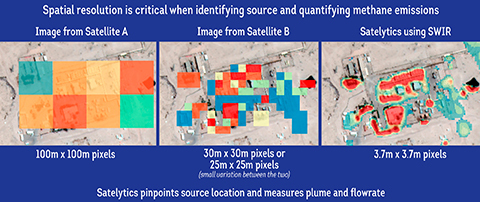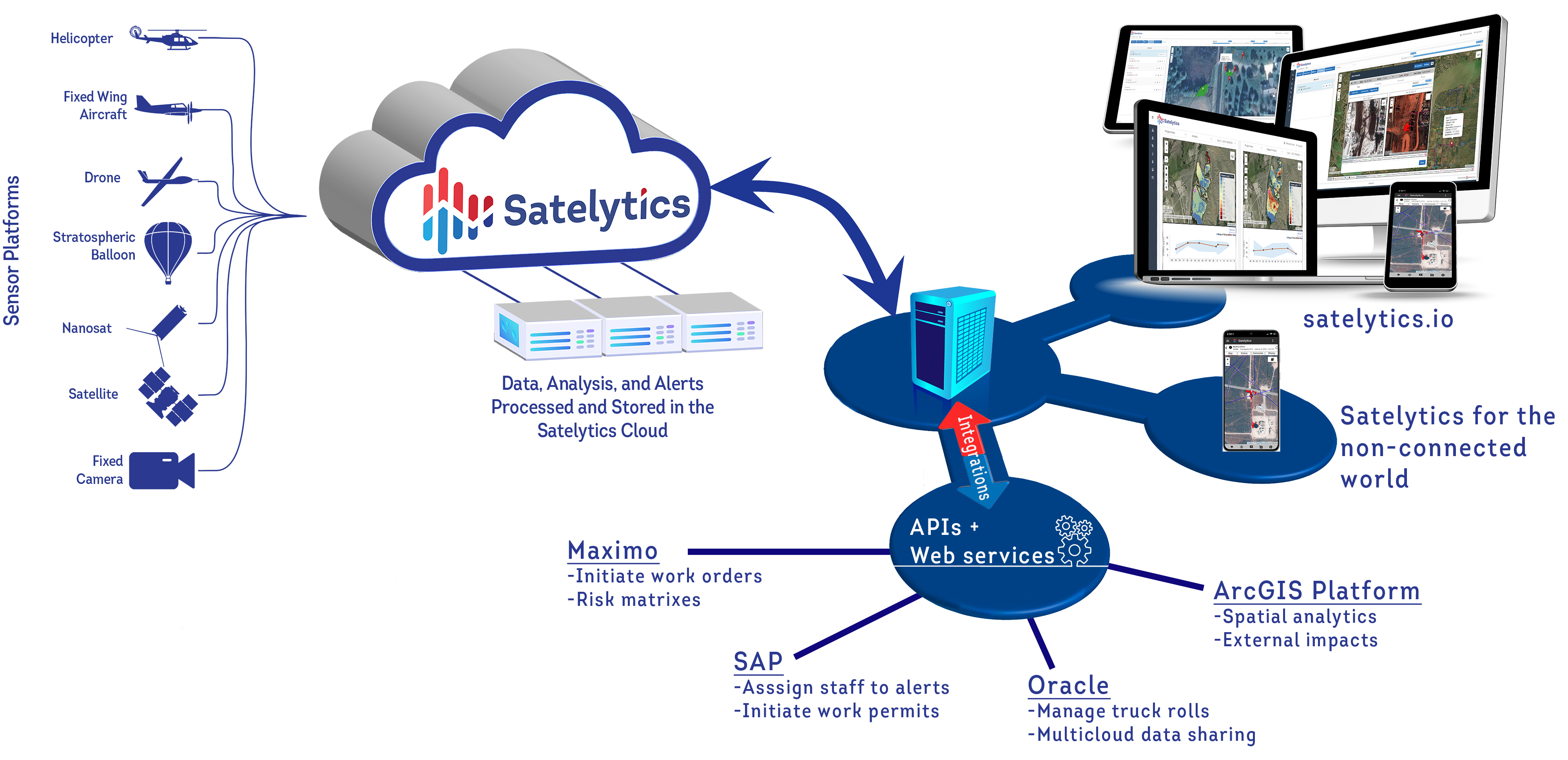
• General

• General
I have spent a good portion of several recent conversations with potential customers setting the record straight on “real-time monitoring.” This is a claim made by some remote sensing companies who are more concerned with hype than delivery on promises. Can the generic family of remote sensing capabilities really provide real-time monitoring for large infrastructure areas? Spoiler alert: NO they cannot, not even Satelytics.
Real-time monitoring is instantaneous. An example is an advanced SCADA system that acquires equipment conditions multiple times per second and calculates conditions outside of the norm for an entire asset. Other examples include internal pipeline leak detection systems and digital twins for offshore platforms with the fastest fiber connections. The response time for these systems is often counted in seconds.
Geospatial analytics offered by Satelytics
are not “real-time.” We instead focus on the delivery of actionable alerts within hours of satellite data capture — a feat unmatched by most and still results in timely notification of problems. After the satellite image is captured, how does that dataset become useful and actionable? There are several keys to making remote sensing actionable and timely:

Satelytics’ algorithms analyze spectral signatures in the infrared portion of the spectrum. They do so in the cloud, enabling us to analyze large data sets, measuring every pixel every time. With cloud computing power and proven AI-powered analytics, the time from satellite overpass to analytical results can be as little as a couple of hours. We don’t claim this is real-time, but we deliver actionable alerts in time to direct action to resolve problems.

Satelytics uses cloud computing and AI to deliver results in hours.
The lesson is this: dig past the hype, seek the truth from experts, ask the questions implied above. Industry is just beginning to learn the value of geospatial analytics. That learning process only advances with accurate information.
Let Satelytics help you solve multiple business challenges in as close to real-time as possible.